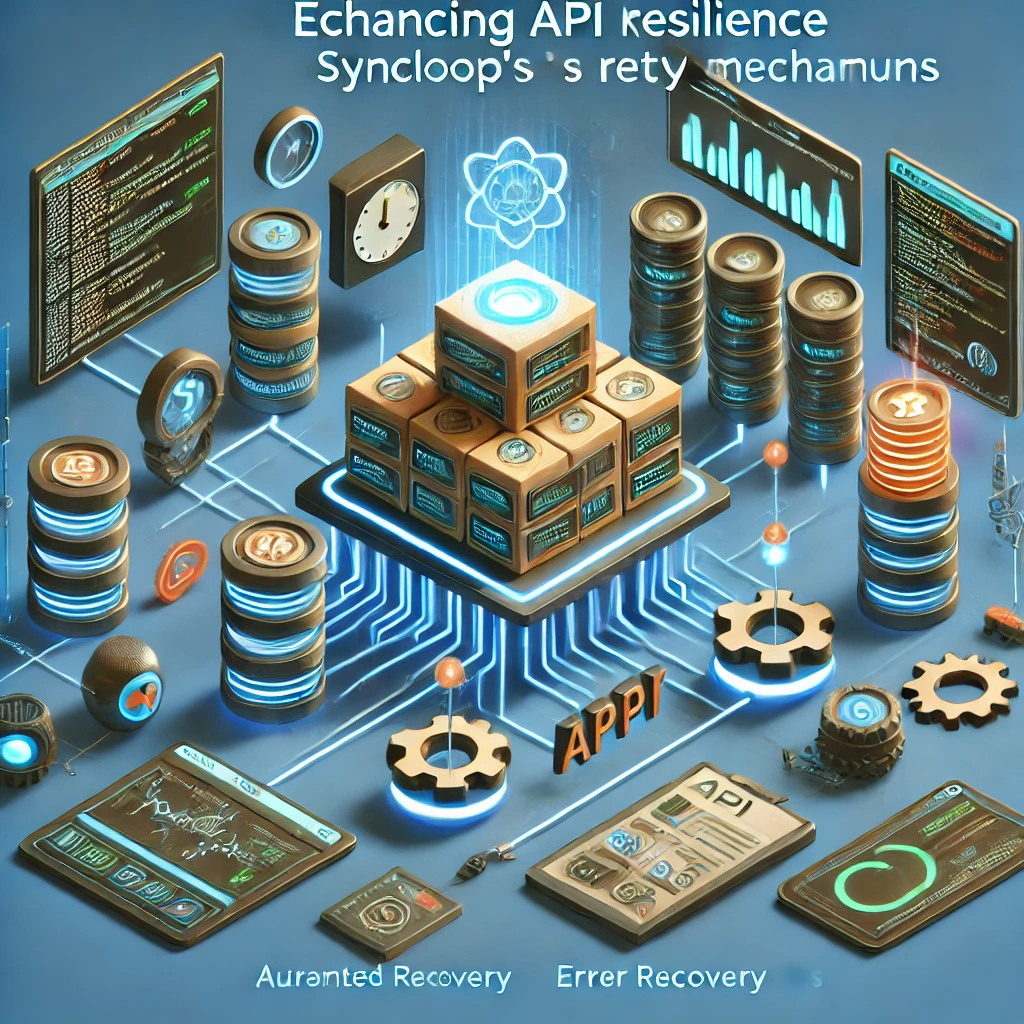Enhancing API Resilience with Syncloop’s Retry Mechanisms

Importance of Retry Mechanisms in APIs
Retry mechanisms are essential for:
- Handling Transient Failures: Recovering from temporary issues like network disruptions or service unavailability.
- Improving Reliability: Reducing the impact of errors on end users.
- Ensuring Data Consistency: Retrying operations to complete crucial transactions.
- Minimizing Manual Intervention: Automating recovery processes to reduce operational overhead.
Syncloop simplifies the implementation of retry mechanisms with flexible tools that integrate seamlessly into API workflows.
Features of Syncloop’s Retry Mechanisms
1. Configurable Retry Logic
Define retry conditions based on error types, response codes, or timeouts.
2. Retry Intervals
Set intervals between retries to balance recovery speed and resource usage, including exponential backoff for optimal efficiency.
3. Retry Limits
Prevent endless loops by specifying maximum retry attempts.
4. Fallback Workflows
Redirect requests to alternative workflows or services after retries are exhausted.
5. Real-Time Monitoring
Track retry operations and success rates using Syncloop’s monitoring tools to identify and resolve issues proactively.
Implementing Retry Mechanisms in Syncloop
Step 1: Identify Failure Scenarios
Determine the types of errors that require retries, such as:
- Network timeouts.
- Server errors (e.g., HTTP 500).
- Rate-limit responses (e.g., HTTP 429).
Step 2: Configure Retry Logic
Use Syncloop’s retry controls to define retry conditions, including:
- Specific response codes or error messages.
- Maximum retry attempts.
- Time intervals between retries.
Step 3: Enable Exponential Backoff
Implement exponential backoff to increase retry intervals progressively, reducing the risk of overwhelming the system during recovery.
Step 4: Implement Fallback Workflows
Create alternative workflows to handle persistent failures, such as:
- Logging errors for later review.
- Notifying administrators.
- Redirecting requests to backup services.
Step 5: Monitor and Optimize
Use Syncloop’s real-time monitoring dashboard to:
- Track retry success rates and patterns.
- Identify frequent failure points.
- Optimize workflows to reduce the need for retries.
Real-World Applications
1. E-Commerce Platforms
Retry failed payment processing or inventory updates to ensure transaction completion.
2. IoT Systems
Recover from intermittent connectivity issues between devices and cloud platforms.
3. Healthcare Applications
Ensure reliable data synchronization for patient records and diagnostics.
4. Financial Services
Retry failed transactions or API calls for fraud detection and credit scoring.
Best Practices for Using Retry Mechanisms
- Define Clear Limits: Avoid infinite loops by setting reasonable retry limits.
- Use Conditional Logic: Retry only for recoverable errors to conserve resources.
- Combine with Fallbacks: Ensure workflows have alternative paths for persistent failures.
- Monitor Continuously: Use real-time metrics to track and optimize retry operations.
- Test Extensively: Simulate failure scenarios to validate retry behavior and performance.
Why Choose Syncloop for Retry Mechanisms?
Syncloop offers a comprehensive platform for managing retry operations, with intuitive controls, real-time monitoring, and seamless workflow integration. Its flexible tools ensure that APIs recover efficiently while maintaining high availability and performance.
Conclusion
Retry mechanisms are a cornerstone of resilient APIs, enabling seamless recovery from transient failures. Syncloop provides the tools to implement robust retry logic, ensuring that your APIs remain reliable and user-friendly. By leveraging Syncloop’s features, developers can build resilient systems that deliver exceptional performance, even in challenging conditions.
Back to Blogs